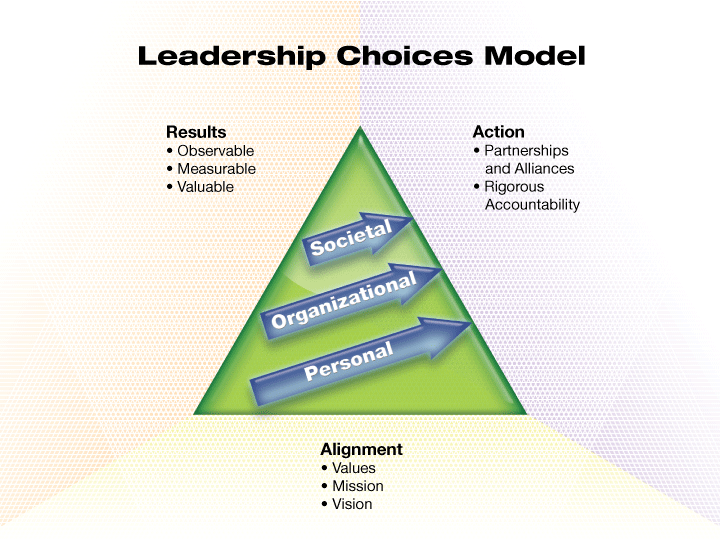
Personal transformation in leadership is an interesting journey. It can change not just a leader's path but also the direction of entire organizations. Did you know 70% of leaders say they see big improvements in their leadership after personal growth? This article looks at how personal growth ties into leadership success. We'll check out the stages of transformation and how it affects leadership. Plus, we'll share some inspiring stories of leaders who have reinvented themselves, along with practical steps for those ready to start their own journey. Whether you're a seasoned leader or just starting out, understanding personal transformation can be a game-changer. Let's get started!
Summary: Dieser Artikel beschreibt die persönliche Transformation in der Führung und deren Einfluss auf den Führungserfolg, einschließlich Fallstudien und praktischer Schritte für Führungskräfte.
Understanding Personal Transformation in Leadership
Defining Personal Transformation in Leadership
Transformational leadership is centered on motivating individuals to achieve their potential and perform optimally by inspiring and empowering them. This leadership style involves:
- Creating a strong vision
- Building a culture where teamwork, ownership, and freedom thrive
The result is enhanced personal and organizational success. Originally introduced by James V. Downton in 1973, the concept was later expanded by James Burns and Bernard M. Bass. The focus is on aligning personal and organizational goals, promoting innovation, and nurturing future leaders through guidance and support.
A transformational leader might motivate a team by:
- Setting a visionary goal
- Promoting creative problem-solving
- Offering tailored mentorship to help each member grow
This approach not only boosts motivation and morale but also aligns personal values with the group's mission, leading to lasting success. For further insights, explore Transformational Leadership.
The Role of Self-awareness in Personal Transformation
For transformational leaders, self-awareness is crucial to effectively inspire and motivate others. It enables them to demonstrate fairness, integrity, and emotional intelligence, building trust and positivity within their teams. Self-aware leaders excel at:
- Setting clear goals
- Recognizing achievements
- Supporting team growth
Tools like the Johari Window and 360-degree feedback enhance self-awareness by revealing how leaders are perceived by others, helping them identify blind spots and areas for improvement. A self-aware leader might recognize their biases and strive to create an inclusive environment that embraces diverse perspectives and talents. Learn more about this aspect of leadership at Transformational Leadership.
Emotional Intelligence and Mindfulness in Leadership
Emotional intelligence and empathy are essential traits for transformational leaders, facilitating connection and understanding within their teams. Mindfulness supports adaptive problem-solving and helps leaders maintain focus on long-term goals while addressing immediate challenges.
Leaders with strong emotional intelligence can:
- Drive innovation
- Keep employees engaged
- Reduce turnover
- Improve quality
Techniques like active listening and empathy exercises can enhance emotional intelligence, while mindfulness practices such as meditation and reflective journaling help leaders stay present, manage stress, and improve focus and decision-making. A mindful leader might practice active listening in meetings, ensuring everyone feels heard and valued, thereby boosting teamwork and trust.
Research from Gallup indicates that teams led by transformational leaders experience:
- 59% less turnover
- 41% fewer quality defects
These statistics underscore the importance of fostering innovation and employee engagement. For more details, visit Villanova University.
Key Stages of Personal Transformation in Leadership
Overcoming Challenges for Transformational Leadership
Leadership development isn't a quick fix—it's a journey that involves thought, action, and continuous improvement. It begins with a comprehensive evaluation of your strengths and weaknesses, utilizing self-assessment and feedback to gauge your effectiveness as a leader. This is essential for transformational leadership, which involves looking ahead, embracing change, and focusing on helping individuals grow to guide organizations through significant changes.
Leaders must be aware of the stages of organizational change—such as awareness, planning, implementation, consolidation, and growth—and adjust their leadership style accordingly. This awareness aids in managing changes and preparing for future growth.

Building Resilience and Adaptability in Leadership
Leading during times of change requires flexibility, self-awareness, and the ability to adapt to evolving circumstances. Transformational leaders set the standard by demonstrating the behaviors they wish others to emulate, thereby building trust and respect. They inspire and motivate with a clear vision.
Being adaptable means being open to new ideas and fostering an environment where teams feel comfortable with change. A resilient leader modifies their approach to confront new challenges, inspires their team with a compelling vision, and exhibits behaviors that build trust and ignite innovation.
Embracing Continuous Learning for Leadership Growth
Once leaders understand their current standing, they create a roadmap with SMART goals that align with their values and the organization's vision. This roadmap guides their growth. Investing in team members through feedback, mentoring, and development opportunities strengthens the entire group.
Clear, frequent, and genuine communication is crucial for building trust, maintaining alignment, and supporting growth. Transformational leadership involves inspiring and motivating teams by setting an example and celebrating achievements. Leaders continuously refine their skills and those of their team by setting clear goals, providing support, communicating openly, and recognizing progress.
Personal transformation in leadership progresses through stages such as self-assessment, mindset shifts, building resilience and adaptability, and committing to continuous learning. This transformation enables leaders to guide organizations through change and growth. It's more than just self-improvement; it's a profound change in how leaders perceive themselves and the world, characterized by clarity, confidence, and compassion.

For further insights, explore these resources on Leadership development, transformational leadership, and organizational change.
Impact of Personal Transformation on Leadership Success
Enhancing Leadership Competencies Through Personal Transformation
Changing how you lead starts with changing how you think and act. It's not just about getting better at skills; it's about a deeper shift. This change helps leaders move from just getting by to really thriving. It turns them from being reactive to being proactive.
When leaders embrace this change, they set ambitious goals that match their organization's vision and handle change with strength. Leaders who see challenges as chances to grow can thrive even when things are uncertain. This shift is about moving from a controlling style to one that welcomes vulnerability and curiosity. It means setting big goals and being flexible when things change.

Building Team Cohesion with Personal Transformation
Great leaders bring teams together by inspiring with a clear vision and offering personal support. This approach boosts team members' emotional commitment and dedication. By building trust and strong relationships, leaders unite team members around shared goals, making communication and cooperation easier.
When leaders communicate openly and often, they build trust and alignment, which are key to keeping the team engaged and working well together. A leader who shares the vision, listens to concerns, and supports growth helps create a team that's cohesive and committed to success.
Driving Innovation Through Leadership Transformation
Leaders who embrace change foster a culture of improvement and creativity. By changing themselves, they shift from reacting to being proactive, getting comfortable with uncertainty, and leading change even when there's pushback.
Leaders with a growth mindset see obstacles as chances to innovate and achieve lasting success. They encourage trying new things and learning from mistakes, driving innovation and managing change well. A leader who adapts and learns from failure creates an environment that values innovation, keeping the organization competitive and forward-thinking.

By using these leadership strategies, leaders can tackle complex challenges like digital transformation and global disruptions. They help create a workplace culture that values innovation, engagement, and lasting success.
Personal transformation in leadership is key for leaders to meet future demands by embracing curiosity, vulnerability, and heart. Leaders like Reed Hastings show this by changing company culture to focus on innovation and adaptability.
Case Studies of Leaders and Personal Transformation
Success Stories of Transformed Leaders
A R&D leader at a major food processing company transformed their career by overcoming imposter syndrome and enhancing self-confidence. This personal evolution led to a promotion and a more influential role in strategic leadership. Their journey illustrates how internal change can result in significant professional achievements.

Satya Nadella, the CEO of Microsoft, revolutionized the company by shifting from a "know-it-all" mindset to a "learn-it-all" approach. This cultural shift fostered improved teamwork, innovation, and a more inclusive workplace, ultimately enhancing morale and business outcomes. Nadella’s leadership exemplifies how altering thought processes can elevate an entire organization.
Takuya Shimamura revitalized AGC, a company with over a century of history, by engaging directly with employees and involving them in the process. His approach to culture change highlights the importance of employee engagement.
Mary Kay Ash, the founder of Mary Kay Cosmetics, revolutionized the industry by empowering women and celebrating their achievements. Her strategies cultivated a culture where individuals felt valued and accomplished, demonstrating the impact of recognition and empowerment in leadership.
Key Insights from Transformational Leadership
Leadership transformations often begin with self-awareness and addressing personal challenges like imposter syndrome to build confidence and strategic capabilities. A clear vision and consistently modeling desired behaviors are crucial for cultural change and employee engagement.
Involving employees and utilizing feedback loops can reduce resistance to change and foster trust, essential for successful transformational leadership. Leaders who prioritize inclusivity and diversity ignite creativity, innovation, and enhanced performance across the organization.
Reward systems, such as those implemented by Mary Kay Ash, motivate teams and reinforce a positive leadership culture. Leaders like Satya Nadella and Mary Kay Ash underscore the importance of vision, inclusivity, and recognition in effecting enduring leadership changes.
Practical Steps for Leaders Seeking Personal Transformation
Crafting a Personal Transformation Strategy
Start your personal transformation plan by setting goals that are clear and a bit challenging, but make sure they align with your organization's objectives. This strategic thinking is essential for long-term planning.
Be open to new ideas and changes. Show your team how to be flexible during this transformation. Help your team grow by identifying their strengths, providing tailored feedback, and offering opportunities for learning and mentorship.
Work on your communication skills:
Engage in frequent and honest communication to build trust and ensure everyone stays aligned. Lead with enthusiasm and commitment. Celebrate wins and show appreciation. A leader who sets clear goals, communicates effectively, adapts to changes, supports team growth, and celebrates successes can truly drive transformation.

Cultivating a Supportive Network for Leadership Growth
A supportive network is crucial for sustaining your personal transformation. Use 360-degree feedback tools to gain a comprehensive view from peers, subordinates, and bosses. This feedback will help you understand how others perceive you and facilitate your growth as a leader.
Engage in development activities:
- Workshops: Participate in interactive sessions and self-reflection to understand your values and the essence of real leadership.
- Authenticity coaching: Seek personal advice on aligning your actions with your core values.
Build trust in your network by practicing emotional intelligence, active listening, and mentoring others. Regularly seeking feedback, attending workshops, and mentoring can foster a network that supports and encourages growth.
Enhancing Leadership with Deepbrain AI Tools
Deepbrain AI tools can significantly enhance transformational leadership by providing data-driven insights for personal coaching and development. AI-powered platforms enhance message clarity and frequency, keeping your team aligned and informed.
By utilizing AI to analyze team feedback and sentiments, you can understand individual needs and offer appropriate support. Additionally, AI tools can simulate leadership scenarios, allowing you to practice and receive real-time feedback.
Leaders who leverage Deepbrain AI to customize development plans, improve communication, and practice leadership skills can amplify both their own and their team's transformation.
By taking these steps, leaders can craft a clear plan focused on growth and adaptability, build a supportive network through feedback and coaching, and use AI tools like Deepbrain to boost leadership effectiveness and personal development.
Transformational Leadership
Authentic Leadership Steps
Personal Transformation in Leadership
FAQs
How Can Transformational Leadership Improve Team Cohesion?
Transformational leadership can significantly enhance team cohesion by inspiring and motivating individuals to think creatively and embrace innovation. This leadership style fosters a positive atmosphere, uniting everyone around shared objectives. Leaders employing this approach articulate a clear vision of the future, which helps unify the team. They empower team members to make decisions and be creative, building trust and collaboration.
Research indicates that teams led by transformational leaders experience lower turnover rates and achieve better results, underscoring their strong cohesion. For example, in a tech company, a transformational leader might inspire the team with a clear vision for innovation, encourage open idea sharing, and support individual growth, leading to a motivated team that meets ambitious project targets.

Key Characteristics of Transformational Leaders
Transformational leaders are distinguished by their vision and ability to inspire. They communicate a clear and exciting future with passion, exuding charisma and influence that galvanizes their team’s commitment and dedication. A cornerstone of their style is intellectual stimulation, as they encourage creative and innovative thinking.
Additionally, transformational leaders provide personalized support and mentorship to each team member, which is crucial to their approach. Other vital traits include emotional intelligence, empathy, adaptive problem-solving, and empowering the team. A transformational leader might mentor team members individually while simultaneously inspiring the entire group with a big-picture goal and encouraging innovative problem-solving.
Is Transformational Leadership Applicable in All Industries?
Transformational leadership is adaptable and can be applied across various industries to drive innovation, adaptability, and growth. Its emphasis on empowerment, creativity, and goal alignment makes it particularly effective in fast-paced and competitive sectors like tech, healthcare, education, and business. While the core principles remain consistent, their application may vary based on industry needs and company culture.
For instance, in healthcare, a transformational leader might inspire staff to adopt new patient care techniques and promote continuous learning. In the tech industry, they might advocate for rapid innovation and adaptability to market changes.

Transformational leadership revolves around leaders inspiring and motivating individuals to surpass perceived limitations by aligning personal and organizational goals. It focuses on creating a shared vision, encouraging new ideas, offering personalized support, and serving as a role model to enhance commitment, innovation, and personal growth. This leadership style encourages individuals to prioritize the team, thereby boosting motivation, morale, and performance.